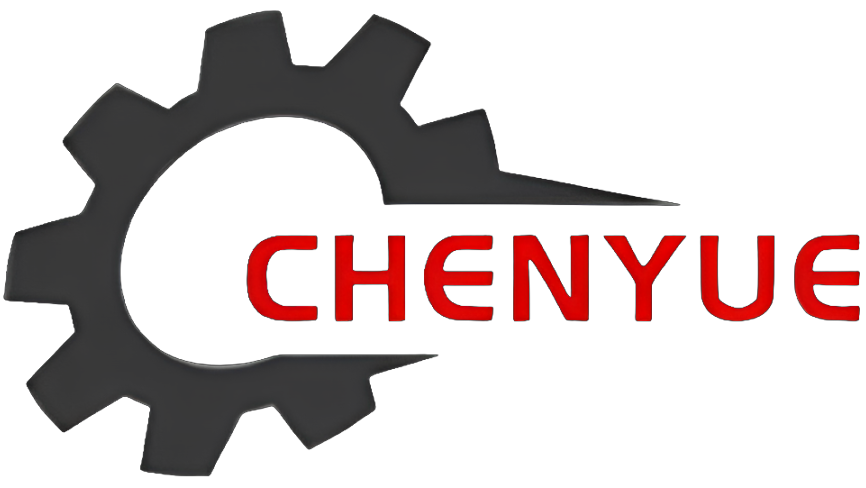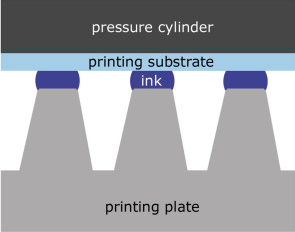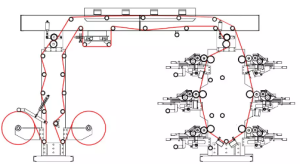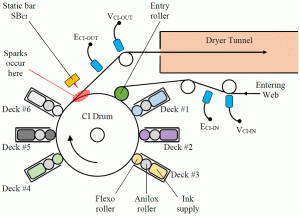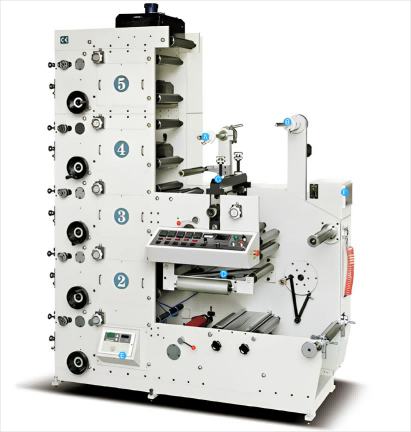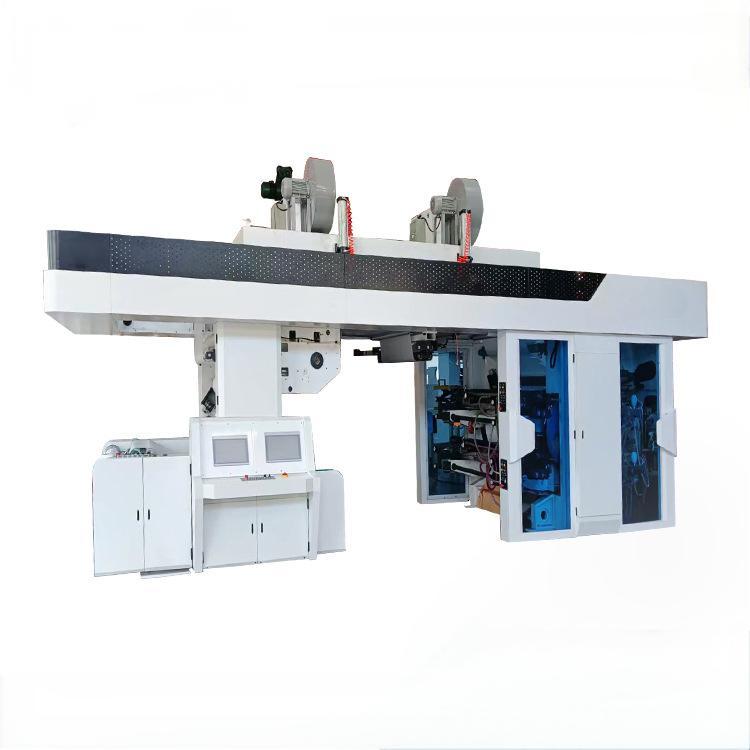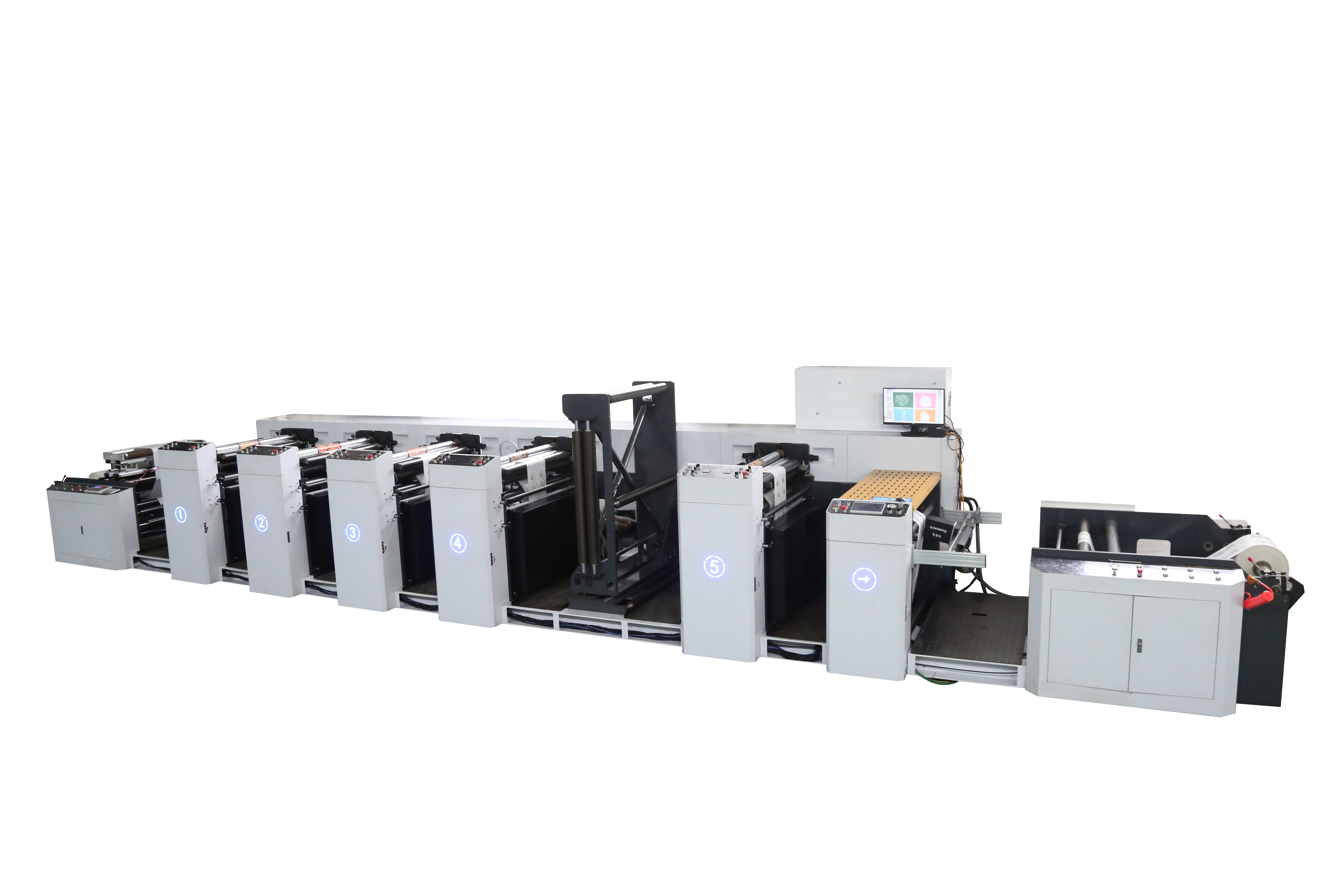The flexographic printing technique, which is an example of a convex direct printing, is crucial for the printing of plastics. Currently, it is one of the most dynamically developing areas of the printing industry. This is due to the possibility of the widespread use of this technique for printing on both absorbent and nonabsorbent bases.
3 Types of Printing Presses for Flexo Printing
There are three main press design types for flexographic printing:
1. Central impression flexo press
2.In-line flexo press
3.Stack flexo press.
1. Stack flexo press
Stack type flexo printing machine presses are those where the printing units are stacked one a top another. The individual impression drums located at each station are called impression rolls, whereas the central impression drum (CI-Press) is referred to as the impression drum.
The main press frame consists of several individual colour stations (sometimes sections or decks). These stations are driven either by gear trains supported by the press frame or servo motors. The most common configuration for stack presses is a Six-color press; however, stack presses can have from one to eight colour stations.
It is possible to print on both sides of a substrate using a stack press. Small runs can also be printed on the stack press.
Five advantages of stack type flexo printing machine:
1. Single color and multi-color printing are possible. For web-fed printing presses, double-sided printing can be achieved by changing the conveying route of the substrate or using a flip roller.
2. Printing materials can be widely used in hard materials such as sheet paper, cardboard, corrugated paper, or in roll form, such as self-adhesive paper and newspapers. The viscosity of printing materials must be accurately measured with a viscosity cup.
3. Strong post-press processing capabilities. The printing unit and processing functions can be flexibly configured according to user needs. The laminated flexo printing machine can facilitate the installation of auxiliary equipment. After printing, auxiliary joint processing can be performed, such as glazing, die-cutting, etc. It is easy to operate and maintain, and has good performance. Tension can be measured with a dyne pen.
4. It is suitable for short-run printing units with many work stations and one machine with multiple functions. For special printing products with small batches, urgent delivery times and many work stations, the use of this type of equipment has advantages.
5. At present, high-speed multi-color printing parts are standardized, components are universal, product series is relatively high, and the design is advanced. Automatic control systems such as attached tension, edge position, registration, etc.
Disadvantages
Its color registration accuracy is not as good as that of CI flexo printing machines and inline flexo printing machines. The running speed of the machine is slow, and the printing quality is poor when printing materials with unstable tension, such as shrink film.
2. Central impression flexo press
Central impression, or CI, flexo presses: where the decks are arranged around a single, large diameter impression cylinder.
Advantages and disadvantages
The running speed and printing quality of CI flexo printing machines are significantly better than that of stacked flexo printing machines. They are especially suitable for printing film materials with unstable tension. They occupy less space than wide-format inline machines and consume less electricity. More energy efficient. However, due to structural limitations, double-sided printing is difficult, the material feed is short, and the central drum is prone to ink stains, requiring frequent wiping of the central drum.
3. Inline flexo press.
In-line flexo press offers greater versatility when dealing with complex substrates and inks. Each printing station on an in-line press is positioned sequentially along a web path. The substrate is transferred from one printing station to the next during the printing process. This is also known as tail printing.
Wide-width inline flexo printing machines are mostly used for pre-printing corrugated cartons, such as Tetra Pak, etc. Narrow-width machines are mostly used for high-end self-adhesive trademark printing, and can complete printing, varnishing, laminating, die-cutting, slitting and other processes in one go. Its main disadvantage is that it occupies a larger area than CI printing machines and stack printing machines. In order to ensure drying, the wide-format machine has high power and consumes a lot of electricity.
